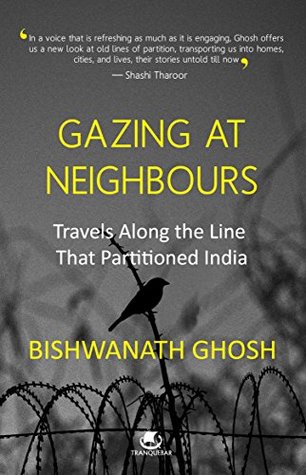More on this book
Kindle Notes & Highlights
Amritsar—pool of nectar—which grew around the tank from which it derives its name, dates back to the 1570s when the fourth Sikh Guru, Guru Ram Das, ordered the construction of the tank. That makes Amritsar older than Shah Jahan’s Delhi, Francis Day’s Madras and Job Charnock’s Calcutta. A city that old—clothed in layers of lapsed centuries, each having its own share of turbulent times—cannot exactly be pretty.
Even though Dyer was censured by the British Parliament and forced to resign from the army, his sympathisers—which included Rudyard Kipling—contributed generously for the fund that was raised for him by the public. And so Dyer, born in Murree in 1864—his father was employed by the brewery there—died a patriot in a town near Bristol in 1927.
In 1757, when the Afghan ruler Ahmad Shah Abdali was returning home after raiding India for the fourth time, Sikh guerrillas waylaid his caravan and not only freed many of the captives but also relieved the invader of some of the loot. An enraged Ahmad Shah then anointed his nine-year-old son, Timur Shah, the ruler of Punjab, placing him under the care of a general called Jahan Khan, and ordered them to demolish Harmandir Sahib, which, at that time, was not known as the Golden Temple because it hadn’t been gold-plated yet. The Afghan soldiers razed the temple and desecrated the holy tank—the
...more
This highlight has been truncated due to consecutive passage length restrictions.
The story goes that sometime during the eighteenth century, the king of Cooch Behar would routinely sit down to play chess with the governor of neighbouring Rangpur state, which was a part of Mughal-ruled Bengal. On stake would be the most fertile pieces of farmland in their respective domains. The king must have been a better player, because by the time the two stopped playing chess, the kingdom of Cooch Behar had 111 enclaves in Rangpur, whereas Rangpur had only 51 enclaves in Cooch Behar. After Partition, while Cooch Behar acceded to India, Rangpur came under East Pakistan which
...more
This highlight has been truncated due to consecutive passage length restrictions.
The exact origin of the word Bangla and Bongo or Bengal is unknown, though the word is believed to be derived from the Dravidian-speaking tribe called Bang that settled in the area around the year 1000 BC. It could also be derived from the word Vanga, which was a kingdom in the Bengal during the times of Mahabharata as mentioned in Sanskrit literature.
Khasi Hills is easily one of the prettiest places on earth. Once you leave the bustle of Shillong behind, the road is deserted and you have the whole place to yourself, hardly a soul in sight except the occasional fruit-picker or villager. And then you come across villages—quaint, charming, and clean.
What a complicated surgery Cyril Radcliffe had had to perform to create two nations out of one in a span of five weeks. A few lines from W.H. Auden’s 1966 poem Partition, in which he imagines, perhaps quite accurately, the circumstances under which Radcliffe carried out the thankless assignment: Shut up in a lonely mansion, with police night and day Patrolling the gardens to keep assassins away, He got down to work, to the task of settling the fate Of millions. The maps at his disposal were out of date And the Census Returns almost certainly incorrect, But there was no time to check them, no
...more
We were in the city of Gour, the capital of ancient Bengal. Nothing remains of that city, of course, except about a dozen monuments from the time when the Turks ruled Bengal: they stand amid mango orchards and mud-house villages of present-day Malda like oases of architectural splendour. They all predate the Taj Mahal by 100 to 200 years but stand nearly intact, surrounded by manicured lawns, with hardly a soul—neither a caretaker nor a visitor—to be spotted around these buildings, even though they are under the protection of the Archaeological Survey of India, or ASI. I could have hammered a
...more
Firoz Minar, the ASI signboard said, was ‘probably constructed’ by Saifuddin Firoz, an Abyssinian who became the Sultan of Bengal in 1486 by killing Barbak Shah, who, as I was to find out later, was also an Abyssinian and the founder of the Habshi Dynasty. Habshi was derived from Habbash, the Arabic word for Abyssinia (now Ethiopia), and later adopted in the subcontinent as the generic term for Africans.
Once upon a time, Murshidabad used to be a riverside caravanserai by the name of Makhsudabad. Behind its renaming was a man called Quli Khan, who was born in a Brahmin family in south India but was raised as a Muslim who went on to impress Aurangzeb with his bookkeeping skills. The Mughal emperor made him the de facto governor of Bengal, whose boundaries at the time also included Bihar and Orissa. Later, pleased by his service, Aurangzeb bestowed him with the title of Murshid. In 1704, when Murshid Quli Khan shifted his base from Jahangir Nagar (now Dhaka) to Makshudabad, he renamed the
...more


